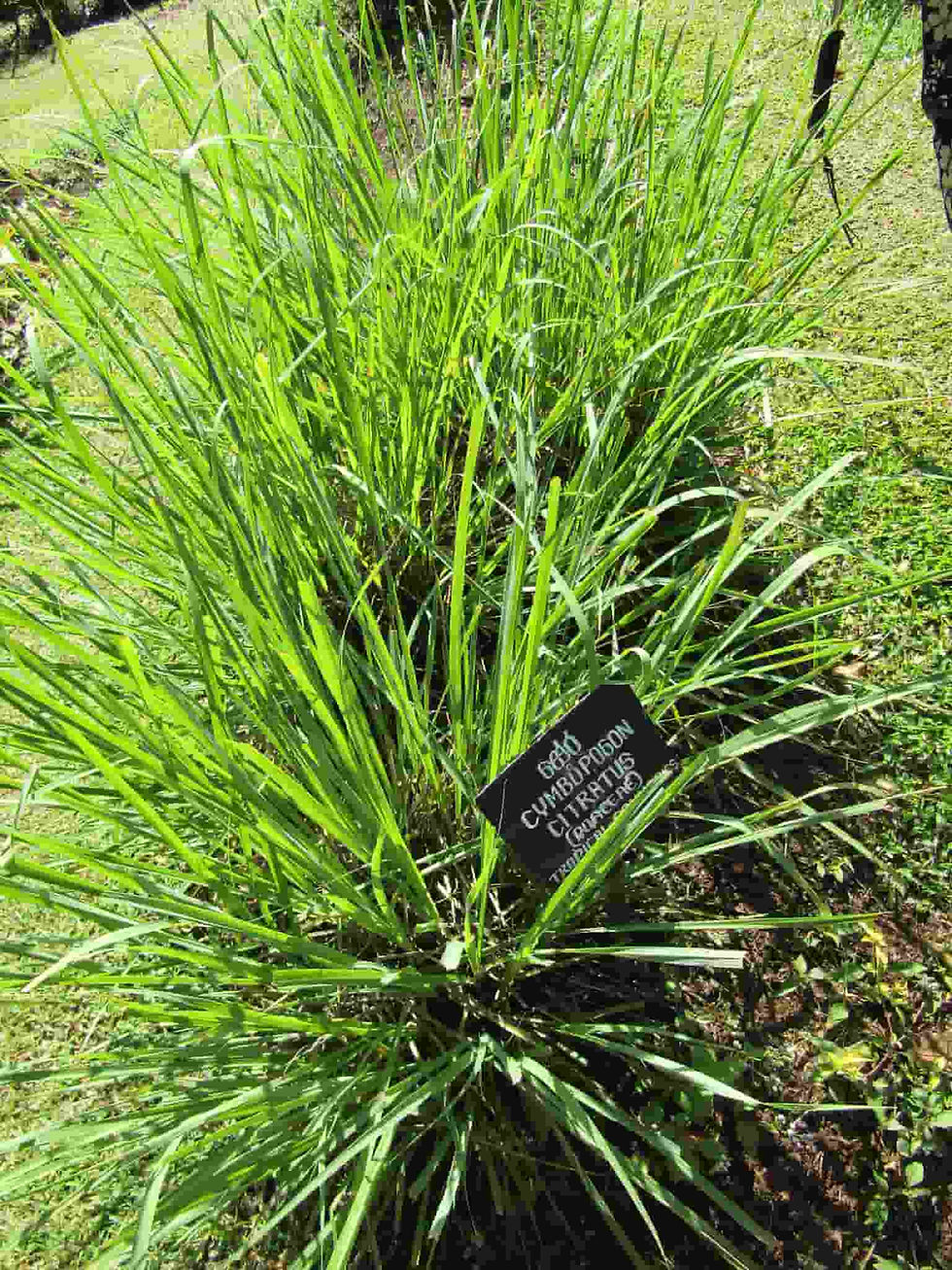Aromatherapy: Science-Backed Benefits & Essential Oils
- Aria Dana

- 1 day ago
- 7 min read
How aromatherapy works, & science behind essential oils, its benefits for stress relief, focus, sleep, and overall wellness.

Table of Contents
What is Aromatherapy?
Aromatherapy, also known as essential oil therapy is a holistic healing practice that uses essential oils—highly concentrated extracts from plants—to promote physical and psychological well-being.
These oils are derived from various plant parts, including flowers, bark, stems, leaves, and roots, and are used for their therapeutic properties rather than just their fragrance [11, 21]. The practice dates back to ancient civilizations: Egyptians used aromatic substances in medicine and rituals as early as 4500 BC, while similar traditions existed in China, India, and Greece.
The term "aromatherapy" was coined in the early 20th century by French chemist René-Maurice Gattefossé [7, 11]. Unlike simple fragrance use, aromatherapy specifically targets wellness and health outcomes through the physiological and psychological effects of essential oils [7, 21].
How does Aromatherapy Works?
Science of Smell and Brain Effects

Aromatic molecules from essential oils enter the body primarily through inhalation or skin absorption. When inhaled, these molecules travel via the olfactory system to the brain, particularly the limbic system, which is involved in emotions, memory, and behavior. This interaction can influence neurotransmitter release (e.g., serotonin, dopamine), modulate the autonomic nervous system, and affect physiological responses such as heart rate and stress levels [7, 9, 11].
Physiological Effects
Aromatherapy has been shown to produce calming, energizing, and mood-enhancing effects, as well as to soothe muscles and improve sleep quality. It can also reduce pain, anxiety, and fatigue, and support respiratory health [7, 12, 16, 20]
Methods of Application
Inhalation: Diffusers, steam inhalation, sprays, vapor balms, or direct inhalation (not recommended in pure form due to irritation risk) [7, 9].
Topical: Massage oils, bath salts, creams—always diluted with carrier oils to prevent skin irritation [7, 21].
Environmental: Candles, room sprays, and other ambient methods [7].
Popular Essential Oils & Their Uses
Essential Oil Benefits Table
Essential Oil | Main Benefits | Common Applications | Citations |
Relaxation, sleep, anxiety relief | Inhalation, massage, sleep aids | [7, 15, 17] | |
Energy, focus, headache, and nausea relief | Inhalation, topical (diluted) | [1, 7, 14] | |
Clears sinuses, respiratory support | Inhalation, topical | [7] | |
Antibacterial, acne, wound healing | Topical (diluted) | [7] | |
Uplifting mood, cleaner, and concentration | Inhalation, cleaning products | [7] |
Table 1. Popular essential oils and their primary wellness benefits.
Essential Oils as Natural Insect Repellents
Several essential oils commonly used in aromatherapy also have proven insect repellent properties.

Lemongrass oil (Cymbopogon citratus) and its main component, citronella, are especially effective; studies show that aromatherapy candles with lemongrass oil can provide strong repellency against mosquitoes, with higher concentrations (13–15%) achieving up to 100% effectiveness against Aedes aegypti [10, 13, 19].
Catnip (Nepeta cataria) essential oil is another potent natural repellent, with its active compound nepetalactone repelling over 70% of mosquitoes for several hours at low concentrations [2].
Clove, cinnamon, eucalyptus, and spearmint oils have also demonstrated significant repellent activity against various insect species, including mosquitoes and stored product pests [5, 6, 18].
The effectiveness of these oils depends on their concentration and the method of application, such as in candles, sprays, or topical formulations. Some essential oils may even attract insects at low concentrations but repel them at higher doses, so proper formulation is important for reliable repellent effects [3].
Overall, aromatherapy oils like lemongrass, catnip, clove, cinnamon, eucalyptus, and spearmint are supported by research as natural insect repellents, offering an alternative to synthetic chemicals [2, 3, 5, 6, 13, 18, 19].
Scientific Backing
Numerous randomized controlled trials and meta-analyses support aromatherapy’s effectiveness for certain conditions:
Lavender: Shown to reduce anxiety and improve sleep quality [12, 15, 17].
Peppermint: Effective for headache relief, nausea, and enhancing alertness [1, 14].
General: Aromatherapy can moderately reduce depressive symptoms, improve sleep, and alleviate pain, especially when used as a complementary therapy [8, 12, 16, 20].
However, aromatherapy is not a substitute for medical treatment and should be used as a supportive measure [4, 7, 21]
Safety Guidelines on How to Use Aromatherapy Oils
Dilution: Always dilute essential oils with carrier oils (e.g., coconut, jojoba) before skin application to avoid irritation [7, 9, 21].
Ingestion: Avoid ingesting essential oils unless under the guidance of a certified aromatherapist or healthcare provider [7, 9]
Allergies/Sensitivities: Conduct patch tests and check for individual sensitivities [7, 9].
Special Populations: Not all oils are safe for children, pregnant women, or pets; consult professionals before use [7, 9].
Aromatherapy is an ancient, evidence-supported practice using plant-derived essential oils for holistic wellness, with proven benefits for mood, sleep, and certain physical symptoms, but requires careful, informed use for safety.
Aromatherapy offers countless benefits—but the right oil depends on your goal.
Discover the Best Essential Oils by Situation: whether you need focus for studying, deep relaxation after a long day, or restful sleep.
Frequently Asked Questions (FAQ)
What is aromatherapy?
Aromatherapy is a holistic wellness practice using essential oils from plants to improve mood, sleep, stress, and overall health. These concentrated extracts interact with the brain and body, promoting balance and relaxation through natural therapeutic properties.
How to use aromatherapy oils?
Aromatherapy oils can be inhaled with diffusers, sprays, or steam; applied topically in massage oils, creams, or baths (always diluted); or used environmentally through candles and room sprays to create calming, energizing, or restorative effects.
Are aromatherapy oils safe?
Aromatherapy oils are generally safe when used properly—dilute before applying to skin, avoid ingestion unless advised by a professional, and check for allergies or sensitivities. Some oils can cause irritation or allergic reactions, and certain groups (children, pregnant women, pets) require extra caution.
Are essential oils safe for pregnancy?
Essential oils are not universally safe during pregnancy, as some can cause hormonal imbalances, toxicity, or even harm fetal development, including risks of miscarriage and birth defects.
Is peppermint oil safe for babies to smell?
Peppermint oil is unsafe for babies to smell. Its menthol component may cause breathing difficulties or apnea in infants. Avoid using near a baby’s nose; always consult a pediatrician before introducing essential oils around children.
How to use essential oils for headaches?
Essential oils for headaches can be used by inhaling through diffusers, applying diluted oils topically to temples or forehead, or wearing aromatherapy jewelry. Common oils include peppermint, lavender, and basil. Effects may include reduced pain intensity, frequency, or improved quality of life. Some oils may not be effective for everyone, and excessive use can cause side effects. Consult a healthcare professional before use, especially for chronic headaches.
References
Ahn, J., Kim, M., & Kim, R. (2024). Effects of aromatherapy on nausea and vomiting in patients with cancer: A systematic review and meta-analysis of randomized controlled trials.. Complementary therapies in clinical practice, 55, 101838 . https://doi.org/10.1016/j.ctcp.2024.101838.
Batume, C., Mulongo, I., Ludlow, R., Ssebaale, J., Randerson, P., Pickett, J., Mukisa, I., & Scofield, S. (2024). Evaluating repellence properties of catnip essential oil against the mosquito species Aedes aegypti using a Y-tube olfactometer. Scientific Reports, 14. https://doi.org/10.1038/s41598-024-52715-y.
Bedini, S., Djebbi, T., Ascrizzi, R., Farina, P., Pieracci, Y., Echeverría, M., Flamini, G., Trusendi, F., Ortega, S., Chiliquinga, A., & Conti, B. (2024). Repellence and attractiveness: The hormetic effect of aromatic plant essential oils on insect behavior. Industrial Crops and Products. https://doi.org/10.1016/j.indcrop.2024.118122.
Brennan, S., McDonald, S., Murano, M., & McKenzie, J. (2022). Effectiveness of aromatherapy for prevention or treatment of disease, medical or preclinical conditions, and injury: protocol for a systematic review and meta-analysis. Systematic Reviews, 11. https://doi.org/10.1186/s13643-022-02015-1.
Brito, G., De Oliveira, P., Silva, C., Neto, M., Leite, F., Mesquita, P., Mota, T., & Magalhães-Junior, J. (2021). Identification of Bioactive Compounds against Aedes aegypti (Diptera: Culicidae) by Bioassays and in Silico Assays. Chemistry & Biodiversity, 18. https://doi.org/10.1002/cbdv.202100242.
Bumbulytė, G., Būdienė, J., & Būda, V. (2023). Essential Oils and Their Components Control Behaviour of Yellow Mealworm (Tenebrio molitor) Larvae. Insects, 14. https://doi.org/10.3390/insects14070636.
Caballero-Gallardo, K., Quintero-Rincón, P., & Olivero-Verbel, J. (2025). Aromatherapy and Essential Oils: Holistic Strategies in Complementary and Alternative Medicine for Integral Wellbeing. Plants, 14. https://doi.org/10.3390/plants14030400.
Cho, K., & Kim, M. (2023). Effects of aromatherapy on depression: A meta-analysis of randomized controlled trials.. General hospital psychiatry, 84, 215-225 . https://doi.org/10.1016/j.genhosppsych.2023.08.003.
Cui, J., Li, M., Wei, Y., Li, H., He, X., Yang, Q., Li, Z., Duan, J., Wu, Z., Chen, Q., Chen, B., Li, G., Ming, X., Xiong, L., & Qin, D. (2022). Inhalation Aromatherapy via Brain-Targeted Nasal Delivery: Natural Volatiles or Essential Oils on Mood Disorders. Frontiers in Pharmacology, 13. https://doi.org/10.3389/fphar.2022.860043.
Dewi, A., & Lusiyana, N. (2020). Uji Daya Tolak Lilin Aromaterapi Minyak Atsiri Serai (Cymbopogon citratus) terhadap Nyamuk Aedes aegypti. , 21-28. https://www.academia.edu/63258653/Uji_Daya_Tolak_Lilin_Aromaterapi_Minyak_Atsiri_Serai_Cymbopogon_citratus_terhadap_Nyamuk_Aedes_aegypti
Halder, D., Barik, B., Dasgupta, R., & Roy, S. (2018). AROMA THERAPY: AN ART OF HEALING. Indian Research Journal of Pharmacy and Science. https://doi.org/10.21276/IRJPS.2018.5.3.2.
Her, J., & Cho, M. (2021). Effect of aromatherapy on sleep quality of adults and elderly people: A systematic literature review and meta-analysis.. Complementary therapies in medicine, 60, 102739 . https://doi.org/10.1016/j.ctim.2021.102739.
Hutahaen, T., Nirmala, A., Nisa, K., & Saradewi, A. (2024). EVALUATION OF AROMATERAPIC LILIN AIDE FORMULATION FROM AGRICULTURAL OIL OF AURISH (Cymbopogon citratus) AS AROMATERAPIC RELAXANT AND INSECT REPELLENT. Medical Sains : Jurnal Ilmiah Kefarmasian. https://doi.org/10.37874/ms.v9i3.1295.
Ishikawa, E., Fujisawa, T., Kimura, Y., Hojo, T., Kamekura, N., & Kido, K. (2025). Effect of aromatherapy with peppermint, ginger, and lavender on postoperative nausea severity after oral surgery under general anaesthesia: A single-blind randomized controlled trial.. Complementary therapies in medicine, 90, 103169 . https://doi.org/10.1016/j.ctim.2025.103169.
Kang, H., Nam, E., Lee, Y., & Kim, M. (2019). How Strong is the Evidence for the Anxiolytic Efficacy of Lavender?: Systematic Review and Meta-analysis of Randomized Controlled Trials.. Asian nursing research. https://doi.org/10.1016/j.anr.2019.11.003.
Lakhan, S., Sheafer, H., & Tepper, D. (2016). The Effectiveness of Aromatherapy in Reducing Pain: A Systematic Review and Meta-Analysis. Pain Research and Treatment, 2016. https://doi.org/10.1155/2016/8158693.
Lee, H., Ang, L., Choi, J., & Lee, M. (2021). Aromatherapy for Managing Menopausal Symptoms: A Systematic Review and Meta-analysis of Randomized Placebo-Controlled Trials.. Journal of alternative and complementary medicine. https://doi.org/10.1089/acm.2020.0315.
Lopez, A., Whyms, S., Luker, H., Galvan, C., Holguin, F., & Hansen, I. (2025). Repellency of Essential Oils and Plant-Derived Compounds Against Aedes aegypti Mosquitoes. Insects, 16. https://doi.org/10.3390/insects16010051.
Salsabila, A., Hutahaen, T., & Basith, A. (2023). Formulasi Dan Uji Aktivitas Lilin Aromaterapi Dari Minyak Atsiri Serai Dapur (Cymbopogon citratus) Sebagai Insect Repellent. Indonesian Journal of Health Science. https://doi.org/10.54957/ijhs.v3i2a.517.
Tang, Y., Gong, M., Qin, X., Su, H., Wang, Z., & Dong, H. (2021). The Therapeutic Effect of Aromatherapy on Insomnia: a Meta-Analysis.. Journal of affective disorders, 288, 1-9 . https://doi.org/10.1016/j.jad.2021.03.066.
Vora, L., Gholap, A., Hatvate, N., Naren, P., Khan, S., Chavda, V., Balar, P., Gandhi, J., & Khatri, D. (2024). Essential Oils for Clinical Aromatherapy: A comprehensive review.. Journal of ethnopharmacology, 118180 . https://doi.org/10.1016/j.jep.2024.118180.
.jpg)



























































Comments